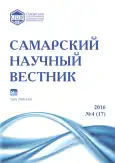The impact of modern transformations of the infrastructure of the city of Samara on the breeding biology of the sparrowhawk
- Authors: Pavlov I.S.1, Makarenkov V.N.2
-
Affiliations:
- Samara branch of Russian Bird Conservation Union
- Children Art School #2
- Issue: Vol 5, No 4 (2016)
- Pages: 44-47
- Section: 03.02.00 – General Biology
- URL: https://journals.rcsi.science/2309-4370/article/view/22135
- DOI: https://doi.org/10.17816/snv20164108
- ID: 22135
Cite item
Full Text
Abstract
Since 1997, we watched the birds of prey that lived in the Samara city, and found that the most numerous and widespread in these conditions is a Sparrow hawk. During this time, the number of this type birds of increase. Now it is we value it more than 50 pairs. In urban environments, many hawks inhabit the typical places for them - woodland area of more than 1 hectare, where a lot of young trees. Not only the natural forests but artificial too. In the last 5-7 years there has been a tendency to breed hawks in atypical for their groves with a very small area in the densely populated areas of the city. In 2016, we found Sparrow hawk’s nest in a grove near the geographical center of the Samara city. Area trees no more than 0,5 hectares, it is 50 meters from the road, and 5 meters from the curb. But here the hawks successfully grow brood. 3 young hawks are haking in the and of nesting (2 females and 1 male). Thus, despite the active cultivation and development of forest parks and vacant lots in the Samara city, carried out in recent years, sparrow hawks, are here in the first place, the optimum feeding conditions, showing almost all adaptive capacity to adjust to changing conditions.
Full Text
##article.viewOnOriginalSite##About the authors
Ivan Sergeevich Pavlov
Samara branch of Russian Bird Conservation Union
Author for correspondence.
Email: ci-pavlov@yandex.ru
candidate of biological sciences, deputy chairman
Russian Federation, 443090, Samara, Antonov-Ovseenko street, 26Vladimir Nicolaevich Makarenkov
Children Art School #2
Email: vnmakarenkov@yandex.ru
teacher
Russian Federation, 443090, Samara, Zavodskoe chaussee, 40References
- Галушин В.М. Хищные птицы леса. М.: Лесная промышленность, 1980.
- Галушин В.М. Адаптации хищных птиц к современным антропогенным воздействиям // Зоологический журнал. 1982. Т. LXI. Вып. 7. С. 1088–1096.
- Галушин В.М. Адаптация хищных птиц к меняющимся условиям среды // XVIII Международный орнитологический конгресс: Тезисы докладов и стендовых сообщений. М.: Наука, 1982. С. 35.
- Галушин В.М. Особенности экопластики хищных птиц // Изучение и охрана хищных птиц Северной Евразии: мат-лы V междунар. конф. по хищным птицам Северной Евразии. Иваново: Иван. гос. ун-т, 2008. С. 80–82.
- Шепель А.И. Адаптации некоторых хищных птиц и сов к антропогенным воздействиям // Экология и поведение птиц: сб. науч. тр. М.: Наука, 1988. С. 180–189.
- Рахимов И.И. Дневные хищники и совы урбанизированных территорий Татарстана // Региональные эколого-фаунистические исследования как научная основа фаунистического мониторинга. Научно-практическая конференция: тез. докладов. Ульяновск: Изд. УлГПУ, 1995. С. 159–161.
- Птицы городов Среднего Поволжья и Предуралья / под ред. И.И. Рахимова. Казань: Мастер Лайн, 2001.
- Рахимов И.И. Дневные хищники в антропогенных ландшафтах Среднего Поволжья // Материалы IV конференции по хищным птицам Северной Евразии. Пенза: ПГПУ, 2003. С. 241–243.
- Павлов И.С. Орнитологические находки в окрестностях города Самары // Исследования в области биологии и методики ее преподавания. Межвузовский сборник научных трудов. Вып. 3(1). Самара: СГПУ, 2003. С. 398–400.
- Штегман Б.К. Дневные хищники // Фауна СССР. Птицы. Т. I. Вып. 5. М.-Л.: Изд. АН СССР, 1937.
- Дементьев Г.П. Отряд хищные птицы. // Птицы Советского Союза. Т. I. М.: Советская наука, 1951. С. 70–341.
- Птицы Волжско-Камского края. Неворобьиные / под ред. В.А. Попова. М.: Наука, 1977.
- Рябицев В.К. Птицы Урала, Приуралья и Западной Сибири: Справочник-определитель. Екатеринбург: Изд. Урал. ун-та, 2001.
- Павлов С.И., Павлов И.С. Хищные птицы Самарского края. Самара: Самарское отд. СОПР. Самара: СамНЦ РАН, 2008.
- Белик В.П. Питание перепелятника в гнездовой период в Саратовском Поволжье // Изучение и охрана хищных птиц Северной Евразии: материалы V международной конференции по хищным птицам Северной Евразии. Иваново: Иван. гос. ун-т, 2008. С. 69–71.
Supplementary files












